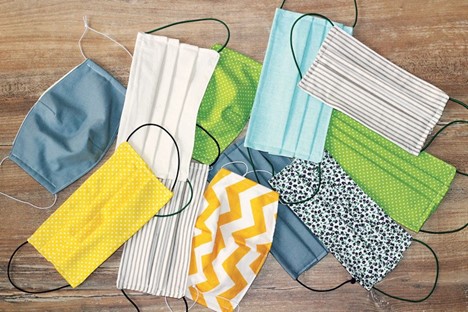Which Face Coverings Work Best?
Last year, a consumer organization in the UK, “Which?” performed a consumer test on various types of fabric masks to determine which is most effective.
They gave each mask a “bacterial filtration efficiency rating”, a standard test used to measure the effectiveness of disposable surgical masks at blocking particles. Face coverings aren’t designed to block ultrafine particles but are intended to help capture larger droplets and aerosols that the wearer breathes out, which potentially contain SARS-CoV-2, the virus which causes COVID-19. Face coverings are intended to be a means of source control at the potential spreader.
When someone is breathing, speaking, or coughing, only a small amount of what is coming out of their mouths is already in aerosol form, nearly all of what is being emitted is droplets.
Many of these droplets will then evaporate and turn into aerosolized particles that are 3 to 5-fold smaller. Wearing a mask as source control is largely to stop this process from occurring, since big droplets dehydrate to smaller aerosol particles that can float for longer in the air. The reduction in particles escaping is thought to reduce the risk of community transmission in enclosed public spaces.
“Which?” determined that masks with several layers were significantly more effective than single-layered masks, and three-layered masks were generally the best. Masks which included disposable filter inserts as the middle layer were most effective. They all blocked more than 95% of particles, which is reportedly equivalent to surgical-style disposable face masks.
A very important point brought up by the “Which?” article is that if a face covering isn’t breathable, it can get damp more quickly with condensation, which reduces effectiveness and might encourage people to fiddle around with the mask or take it off. It’s worth noting that, while some masks were more breathable than others, none were seriously difficult to get air through. So, if you are willing to sacrifice some level of comfort for higher filtration, you could opt for one of the less breathable options.
ACS Nano details a study in which they determined that cotton, which is the most widely used material for cloth masks performed better at higher weave densities (higher thread count) and can make a difference in filtration efficiencies. Their studies also implied gaps caused by improper fit of the mask could result in over 60% decrease in the filtration, implying the need for future mask design to take into account fit and leakage so exhaled air can vent effectively. In the case of silk face coverings, they found that there was an electrostatic effect that aided in filtration and four layers is ideal.
They determined that combining layers to form a hybrid mask, leveraging mechanical and electrostatic filtering may be an effective approach, for example a high thread count cotton combined with two layers of natural silk or chiffon.
In conclusion, reusable fabric face coverings should fit well, have multiple layers with a high thread count with different sorts of fabric. It should also be noted that they must be washed regularly to prevent infection for the wearer and potential exposure for those in the presence of the wearer.
Resources
Which? – Face Mask Tests Reveal Huge Differences in Filtration – 2020 https://bit.ly/36Hn4Ns
ACS Nano – Aerosol Filtration Efficiency of Common Fabrics Used in Respiratory Cloth Masks – 2020 https://pubs.acs.org/doi/pdf/10.1021/acsnano.0c03252
Jeremy Howard et. Al – Face Masks Against COVID-19: An Evidence Review – 2020 https://bit.ly/2JGWOdq
Oberg & Brosseau – Face Masks Against COVID-19: An Evidence Review – 2020 https://bit.ly/33RaGZA
C & EN – What Fabrics Make the Most Effective Face Masks – 2020 https://cen.acs.org/materials/fabrics-make-effective-homemade-masks/98/i18
ISRP 2020: The Role of Respiratory Protection in Response to Coronavirus: European Response to SARS-Cov2 (COVID-19) Outbreak https://youtu.be/lyJGgZYCTAI

